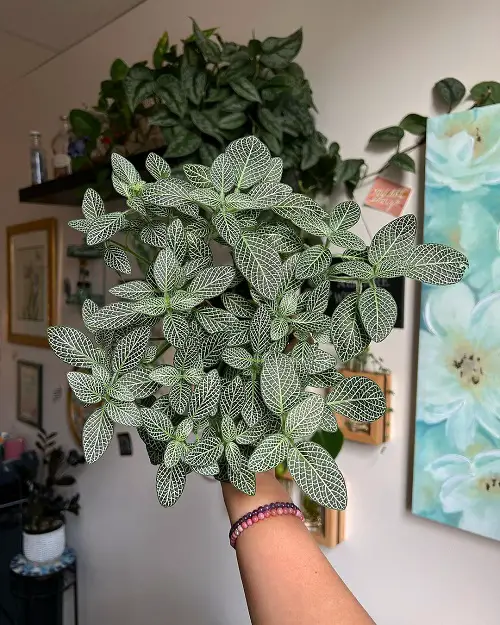Want to make your Nerve Plants a little more colorful, bushier, and lush than now? Well, you need to need some science to do this.

To achieve a bigger, fuller, and more colorful Fittonias, it is essential that you provide the right care to the plant and then apply these tricks. Here’s how to achieve the Instagram-worthy nerve plant!
Check out the most beautiful nerve plants
How to Make Nerve Plants More Colorful, Bushier, and Lush

1. Are You Providing the Right Humidity?
Nerve plants have their roots in the tropics, and therefore, they are in love with the wet air. In a typical household environment, humidity may not be at the level this plant likes (60 to 90%) to stay at, so it is important that you either get a humidifier or keep its pot on a tray filled with pebbles and water.
You can also keep the plant in a bathroom. If you have a humidity monitor, note your average humidity you have in your home, if it is around 60 percent, you don’t need to do these things.
10 Ways To Increase Humidity For Houseplants That Work
2. What About the Sunlight?
Nerve plants stand out with their vivid foliage and deep veins. In order to ensure they maintain them at the best of their levels, you need to provide the right mix of sun and shade.
Direct sunlight exposure in the afternoon is a big no-no for these specimens. Expose them to the direct morning sunlight for 2-3 hours, and then make sure they get indirect and bright light for the rest of the day.
An east-facing window or location is an ideal spot for these plants.
Plants for West and East Facing Balcony Garden
3. The Right Dose and Timing of Fertilization
When it comes to nerve plants – don’t experiment with various blends. The best one is your simple, balanced liquid fertilizer with micronutrients.
Dilute it to 1/2 of its strength, and use it once in 3-4 weeks. It will give the plant all the boost it needs to grow bigger-sized leaves and turn bushier!
Note: Avoid feeding the plant during the colder months.
4. Snip Some Leaves and Stems Away
Once your plant reaches a height of about 4-6 inches, you can start pruning it gently to encourage bushier growth. Look for the nodes (cut above them), or snip away the tips of the stems to stimulate a bushier appearance.
Also, remove less colorful older leaves to make way for the new, vivid ones!
5. CO2 Enrichment
As we all know, plants use CO2 for photosynthesis, converting it into sugars and oxygen – more amounts of it can result in vivid coloration and numbers in leaves.
What you can do is – get a CO2 generator and a meter. Move your group of plants to a closed chamber or cabinet and release the CO2 around the plants (at a slow rate, for a few minutes) once in 2-4 weeks. While doing this, make sure the CO2 level never exceeds 1500 ppm.
Note: Do not expect overnight results – the process takes time and repeated settings. Also, this may or may not work.
If this trick is way too much, breathing on your plants a lot can raise the CO2 levels around them as well 😉. While this won’t provide a substantial boost 😁, it might help.
You can also try Carbonated Water for Plants
The #Number 1 Trick!

Well, we have saved the best one for the last! To enhance the coloration and size of the leaves, along with the overall bushiness and vigor of the plant – use a weak tea solution as a natural fertilizer.
You may ask, why? The tannins in the tea aid in nutrient retention and uptake by plants. This improvement leads to larger, more vibrant leaves.
All you have to do is add a small teaspoon of used tea (That kinda rhymed!) per pot once every 2 months.


